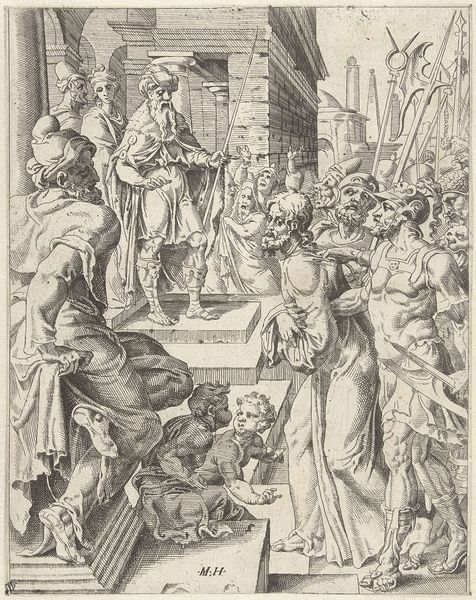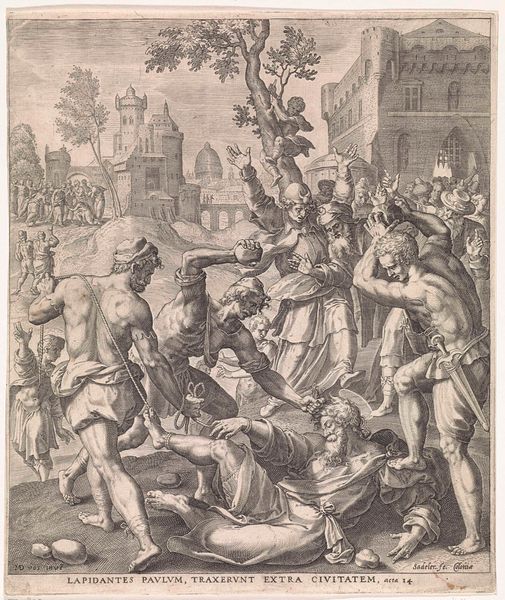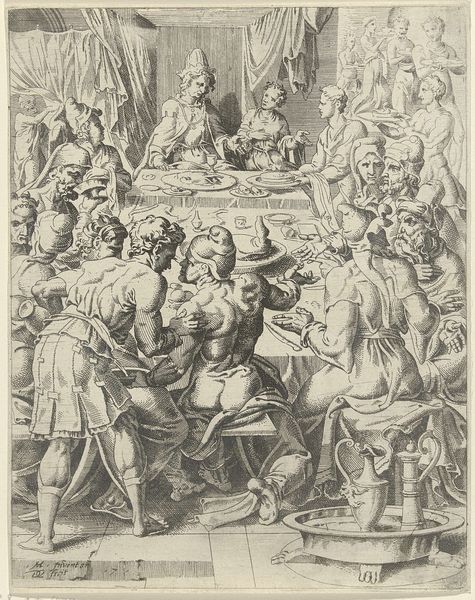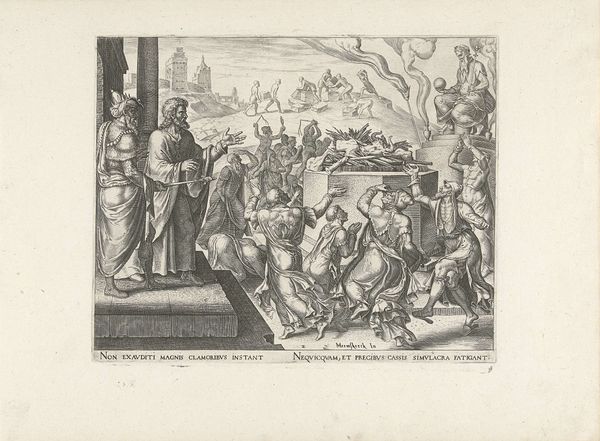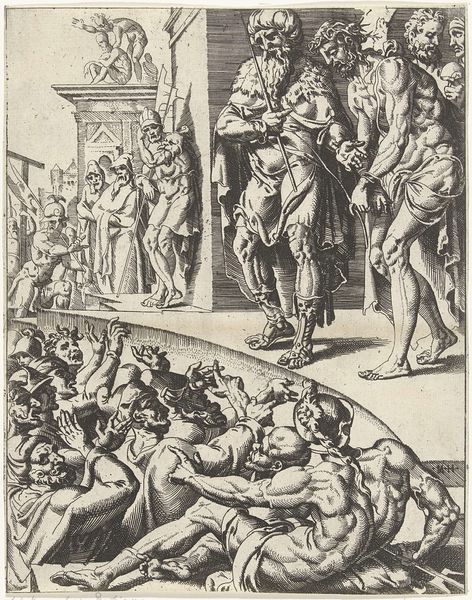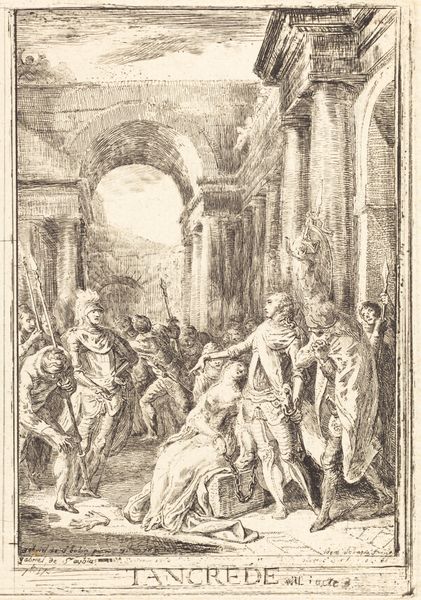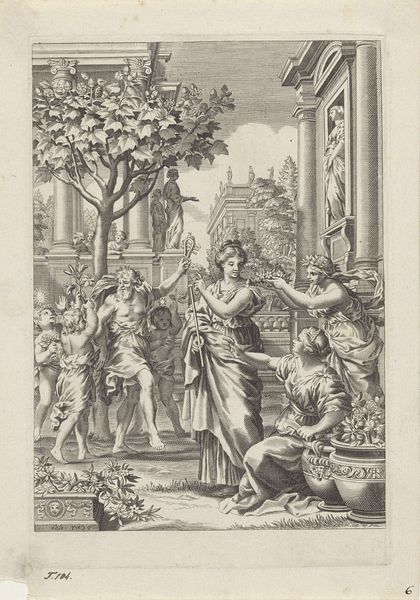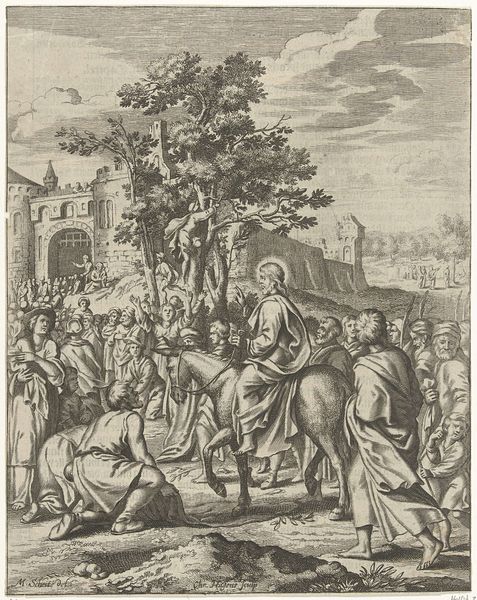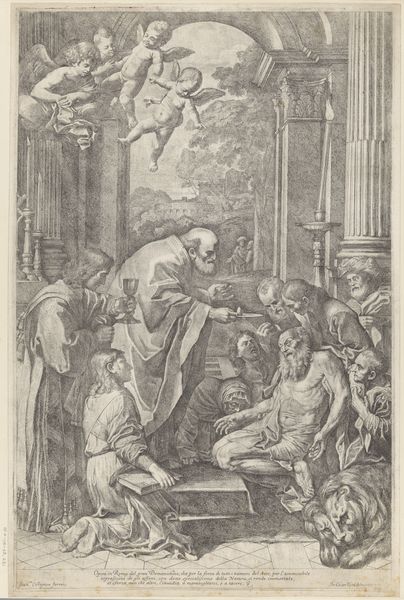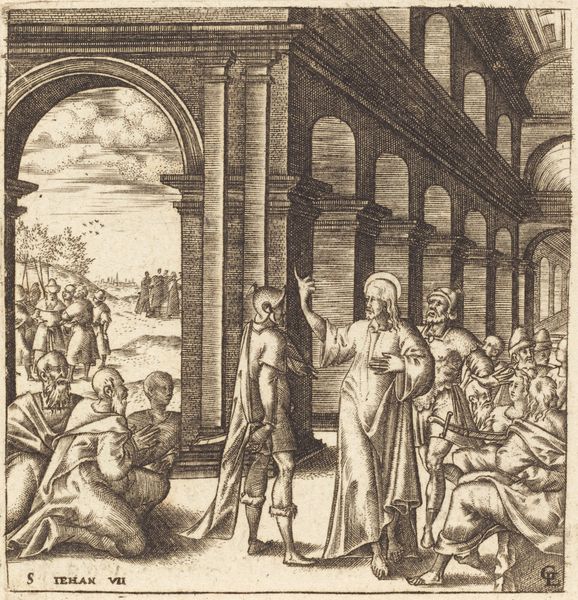
print, engraving
#
ink drawing
#
pen drawing
# print
#
figuration
#
11_renaissance
#
history-painting
#
engraving
Dimensions: height 255 mm, width 200 mm
Copyright: Rijks Museum: Open Domain
Editor: So, this is "The Adoration of the Magi," a print after 1566 currently housed at the Rijksmuseum. It's attributed to an anonymous artist. As a print, the detailed engraving is incredible, but I find it fascinating how it merges an intimate Nativity scene with a grand procession in the background. What story does this artwork tell, beyond the obvious biblical narrative? Curator: It’s fascinating to consider this engraving as a document of religious and political negotiation. The opulent details in the clothing of the kings contrast sharply with the humble setting, right? It prompts a viewer, then and now, to think about power and its representations. Look closely at that procession: What socio-political undercurrents might an artist in that time embed within such imagery? Editor: I hadn’t really thought about the power dynamics...it feels almost propagandistic now that you mention it. Is it meant to reinforce the church's authority or the piety of rulers? Curator: It could be both, simultaneously, or even neither! What's critical is considering how the distribution of prints like these would influence popular perception. They allowed for broader dissemination of religious narratives and interpretations, shaping public sentiment towards established powers. How does the architectural backdrop, with its arches leading to that landscape, impact your reading? Editor: I guess the arches separate the holy event from the public sphere or imply that the procession is connected with the Nativity? So this image functions on multiple levels – spiritual and social? Curator: Precisely. By analyzing its visual components within the context of its distribution and reception, we gain insights into the complex relationship between art, religion, and society in that era. It challenges the notion of passive viewership and emphasizes the political work images perform. Editor: This makes me look at prints with different eyes. Now I want to understand how they were distributed and understood by different social groups at the time. Curator: Exactly! And by doing so, you are contributing to the ongoing story of this piece and its impact.
Comments
No comments
Be the first to comment and join the conversation on the ultimate creative platform.

